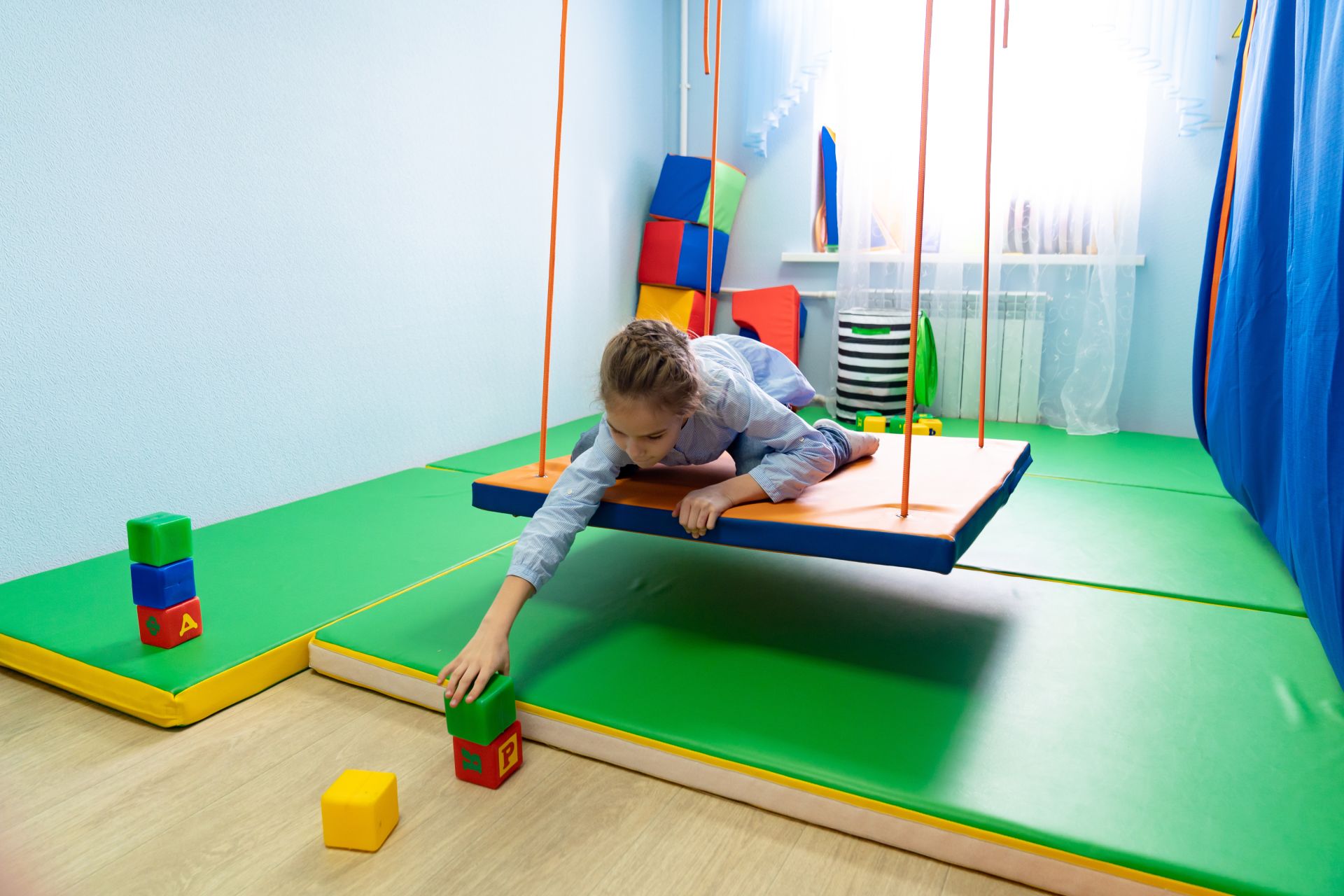Occupational Therapy Month - What is OT?
Occupational therapy, or OT for short, is a healthcare profession that helps people do the things they want to do or need to do every day. Occupational therapists call these daily activities “occupations” and use these meaningful occupations as not just the goal of therapy, but the method of therapy as well. Therapists use occupation-based interventions as part of their treatment.
An example of this might be for a young child who needs to improve their fine motor skills to do things like eat with utensils or hold a pencil to write. Instead of doing rote physical exercises to increase the child’s hand strength and fine motor skills, an occupational therapist might find an activity (or occupation) that the child loves doing to accomplish this same goal. So, they might do activities with play dough or finger paint or have the child pop bubble wrap

something that the child is motivated by that will also increase their fine motor skills. Because of this use of meaningful occupations as intervention, occupational therapy is generally really fun for kids! After all, playing is one of the most important occupations for young children, so often their therapy just looks like play.
Some occupational therapists practice something called sensory integration therapy, which supports children with sensory processing difficulties. Sensory processing or sensory integration refers to the brain’s ability to organize and respond to sensory input that comes from the environment around us. If you’re interested in learning more about how early childhood educators can use sensory strategies to promote regulation for the children you work with, check out IMPACT’s on-demand course, Sensory Strategies & The Brain: Promoting Self-Regulation & Learning.
Sensory integration OTs typically work in what are called “sensory gyms” that have things like swings, ball pits, climbers, trampolines, slides, and more. Sounds fun, right? As OTs “play” with kids in these sensory gyms, they are actually helping the child learn how to process the sensory input their bodies are receiving so that all of their senses can be integrated and work together better. Kids with autism, ADHD, or behavioral or sensory challenges may be referred for sensory integration therapy.


Occupational therapists don’t just work with kids in sensory gyms. They can work with people of all ages, with all different conditions and disabilities, in all different settings. In addition to sensory gyms, OTs can also work with young children in the home as part of an early intervention team, in schools as part of a child’s IFSP (Individualized Family Service Plan) or IEP (Individualized Education Program), in a sensory gym or clinic, within a mental health clinic, or even in a hospital.
Occupational therapists can also work with adults in various settings. Some OTs specialize in physical rehabilitation and work with people who are recovering from an accident, stroke, spinal cord injury, or many other conditions. Just like with kids, OTs use an adult’s meaningful occupations or activities of daily living (ADLs) as part of their treatment plan and to get them back to being independent in doing these things that they want to do or need to do every day. Examples of this could include incorporating brushing teeth, getting dressed, or other ADLs into treatment to work toward goals of improving independence in these areas. Or they can incorporate a favorite activity a patient loves doing into therapy. For example, if a patient loves to scrapbook, the OT could actually bring this activity into treatment and use this meaningful occupation to help a patient improve their fine motor skills, dexterity, cognitive abilities, or other goals the patient has. OTs are trained to break an activity down into all of the required skills to do the task, a process called activity or task analysis. Through this process, occupational therapists help their clients or patients build skills and independence and work toward whatever goals they have.
Early childhood educators may work with children who are receiving occupational therapy, and you may even have an OT come into your classroom at some point. Understanding how OTs support young children and learning the goals they have for a child you work with can make you as an educator more capable in meeting that child’s needs in the classroom.

Join us in celebrating Occupational Therapy Month this April and every month as we learn and share about all of the different ways OTs can help people!
If you want to learn more about sensory strategies, check out these courses:
All content, including the presentation thereof on this web site, is the property of Northwest Center IMPACT™, and protected by U.S. and international copyright laws. You may not copy, reproduce, distribute, transmit, modify, create derivative works, or in any other way exploit any part of copyrighted material without the prior written permission from Northwest Center.
Connect
-
Seattle, WA
-
impact@nwcenter.org
-
NWC Home
Policy pages
Subscribe & stay up to date
Copyright © 2025
